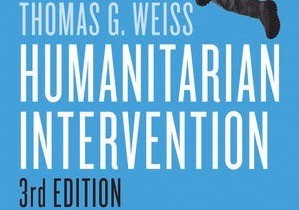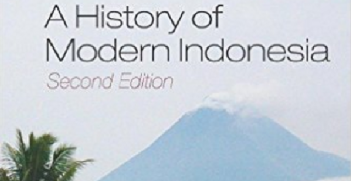Reading Room: Humanitarian Intervention

Despite the international community’s pledge to ‘never again’ allow mass atrocities like the Rwandan genocide to be repeated, the constant flow of news coming from countries such as Burma/Myanmar, Burundi, Eritrea, Iraq, Sudan, Syria and Yemen are a sore reminder that this promise is far from being a reality. However, by providing a succinct yet articulate overview of the evolution of the theory and practice of humanitarian intervention over the years and by suggesting ways to keep moving forward, Thomas G. Weiss reminds us that these situations are neither inevitable nor unstoppable.
The author begins by defining what he refers to as the ‘conceptual building blocks of the book’. One of Weiss’s strengths lies in the fact that he clearly defines what is meant by humanitarian intervention and how this concept is related to, yet distinct from, notions such as peacekeeping, without getting caught in endless and complex terminological debates. Weiss also offers a clear overview of the normative debates that took place over the years and thus provides a great roadmap for the rest of the book.
The author then adopts a historical approach and investigates key instances of humanitarian intervention from the nineteenth century to the present in order to demonstrate that even though normative progress has undeniably been achieved, the growing normative consensus around the use of force remains inconsistently translated in practical interventions. According to the author, too many crises do not benefit from what he perceives as the necessary use of force to put an end to mass atrocities.
In order to deepen his argument, Weiss proceeds by investigating the characteristics of contemporary armed conflicts and their challenges. In his analysis, the author is again not afraid to tackle important concepts such as ‘new wars’ and ‘new humanitarianisms’ in order to provide a clear overview of what is actually new in contemporary armed conflicts and the implications for conflict resolution.
He then turns to available solutions by focusing on what many would describe as one of – if not the – fastest normative transformation in the international arena: the Responsibility to Protect (R2P). Considering that Weiss was the research director of the International Commission on Intervention and State Sovereignty (ICISS) to which we owe the ground-breaking 2001 report The Responsibility to Protect, this chapter provides an in-depth and insightful account of the origin, emergence and development of this international social norm.
To conclude, Weiss identifies five ongoing challenges faced by humanitarian intervention: 1) the fear by many developing states that R2P is a pretext to interfere in their domestic affairs, 2) the damage made to R2P when the Iraq war was justified in humanitarian terms, 3) the lack of will from major powers (in particular the United States) to commit resources, 4) the economic dimension of new wars and 5) the identity crisis of humanitarian agencies. He argues that the ‘essential challenges […] are not normative but, rather, operational’ and thus calls for a reconciliation of theory and practice in order to transform ‘here we go again’ into a genuine ‘never again’.
Building from his insights as a leading expert of humanitarian intervention, Weiss provides a valuable overview of the evolution of the theory and practice of humanitarian intervention. He makes a bold (some might even say controversial) yet convincing argument that ‘we have witnessed not too much but, rather, too little armed force to protect human beings’ and does so in a concise, personal and engaging manner.
Even though the structure of the book remains unchanged, this new edition is a welcome contribution as Weiss not only discusses the latest developments and scholarship around the R2P, he provides answers to important questions such as ‘why Libya, and why not Syria?’ and what is next?
In 267 pages, Weiss manages to discuss not only the historical evolution of humanitarian intervention and key case studies but also the political, ethical, legal, operational, strategic and economic dimensions of humanitarian intervention, its key challenges and suggestions on how to move forward. This book is thus a ‘must read’ not only for academics and students of international relations but also anyone interested in human protection, including policymakers.
Thomas G. Weiss, Humanitarian Intervention: Ideas in Action (3rd edition), Polity Press, 2016. ISBN: 9781509507313.
Dr Eglantine Staunton is a research fellow at the Asia Pacific Centre for the Responsibility to Protect, The University of Queensland.





